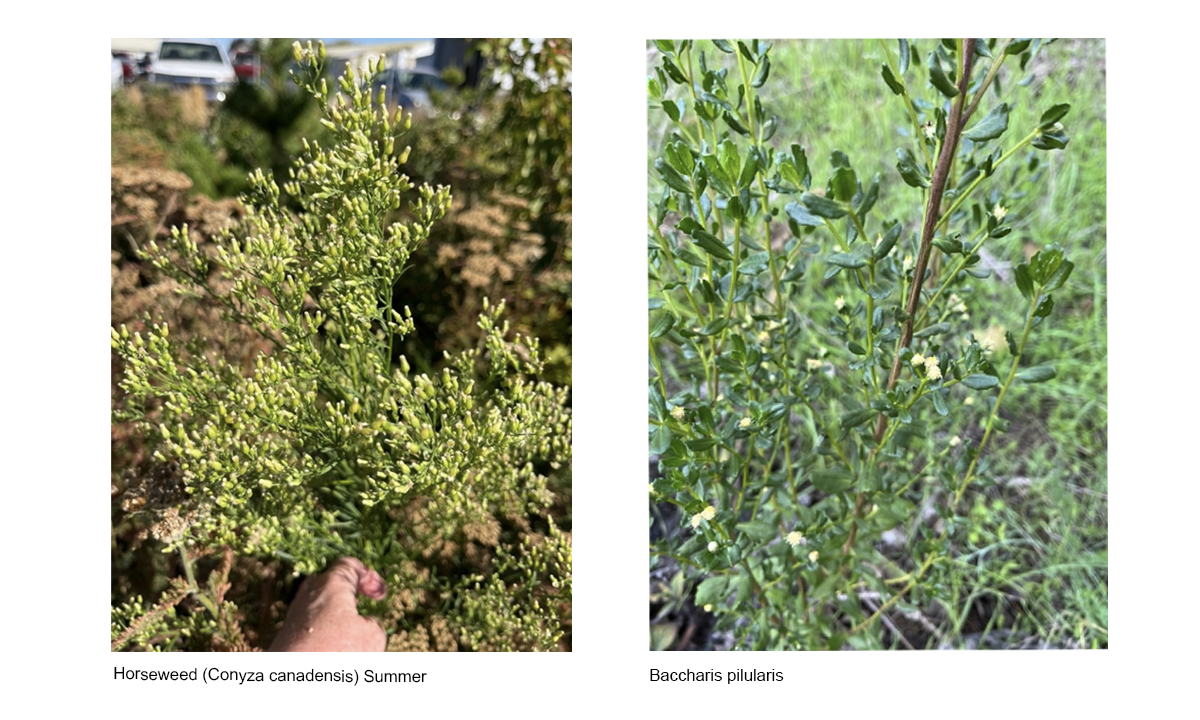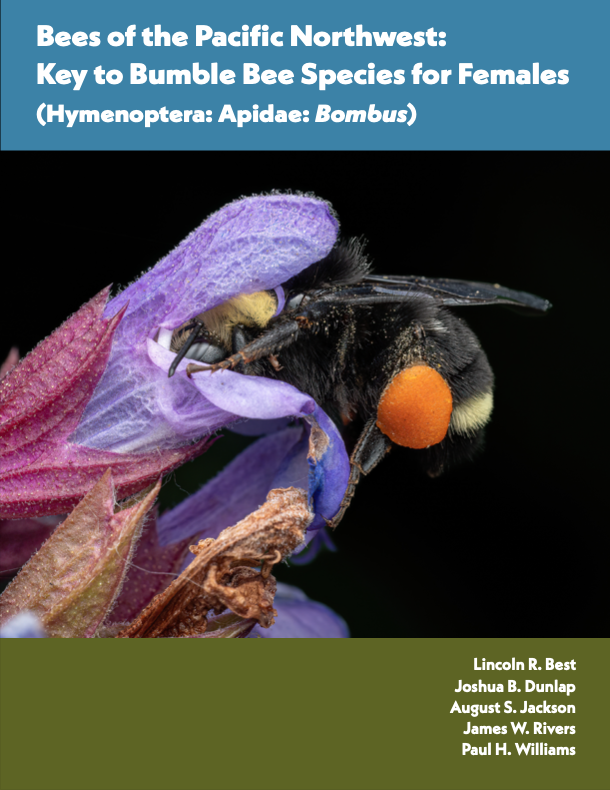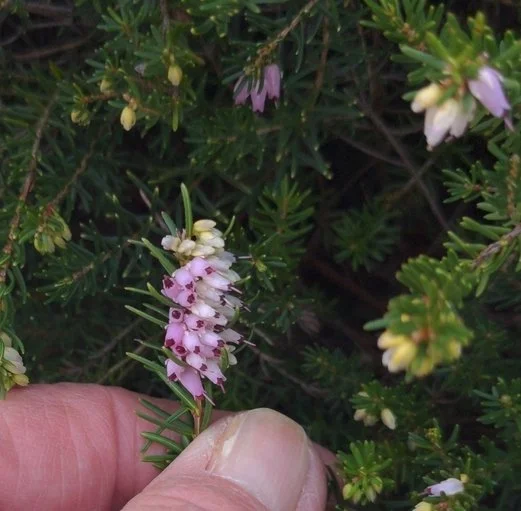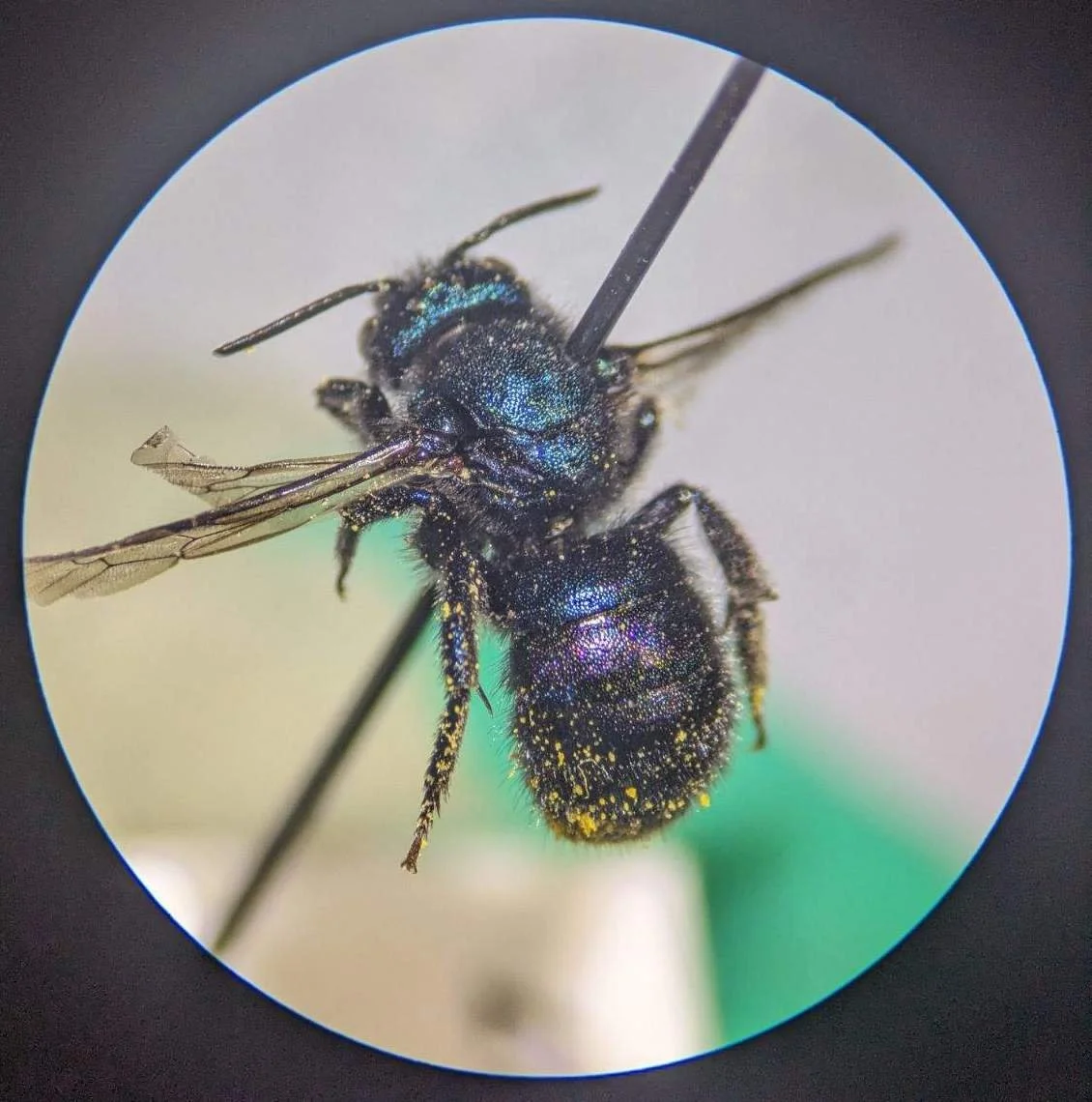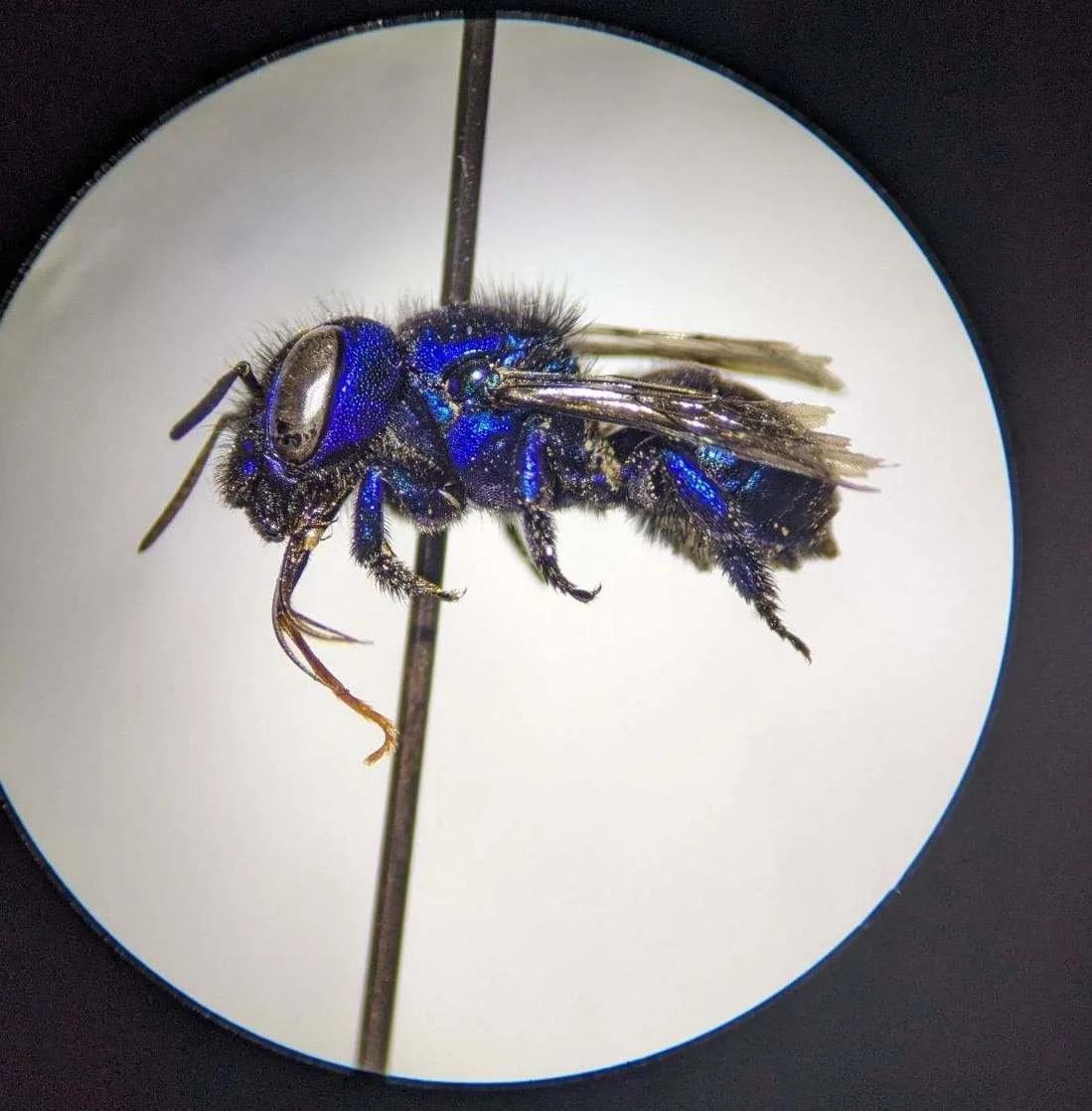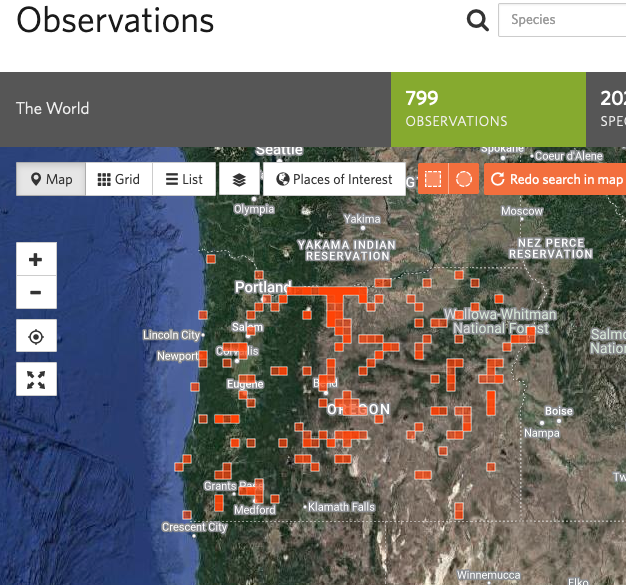Happy new year!
Do your new year’s intentions focus on upping your ID game, talking to more people about native bees, or getting to unsampled Oregon territory on behalf of the OBA? There are loads of events to support all of these great goals in 2024. Read on to find the right opportunities for you!
Thank you to Jeanie Taylor and Robin Gill who have provided wonderful newsletter content the last few months. Are you interested in helping build our community of native bee enthusiasts? One way to do so is to help assemble the Roundup. If you’d like to take on a section or be a roving reporter, just let us know! Email me at e.silva@comcast.net.
If you have any feedback or submission for Field Notes or if you want to post notes for your regional team contact Ellen Silva (e.silva@comcast.net). Photo credits are at end of newsletter.
In this issue
Field Notes
There wasn’t a lot going on this winter that didn’t involve peering through a microscope, but we missed reporting on the event below last fall. This is a good reminder to start getting your 2024 outreach events lined up!
October outreach Event combines Native Plants and Native bees
Robin Gill
Scappoose Bay Watershed Council held their very popular biannual Native Plant Sale on Saturday, October 14. from 9 am-2 pm at the Scappoose High School. The Oregon Bee Atlas was represented by volunteer Robin Gill (see photo). An estimated 250 people attended the sale.
The new Food Hero activity books were a welcomed treat for visitors. Several adults made a point of sharing that coloring is a soothing activity that is not just for the wee ones. In addition to the fascinating Oregon Bee Atlas literature, the free bee themed stickers and the Grumpbee native plant seeds were a big hit. People also enjoyed tooking at the bee collection on display. Due to the cloudy conditions, we weren't able to get a good view of the eclipse but we were grateful for the dry weather.
Robin Gill ready to charm the visitors at the Scappoose Bay Watershed Council annual plant sale. Go, Robin! (photo provided by R. Gill)
APPRECIATING AN UNLOVED BEE PLANT
Jeanie Taylor
Horseweed (Conyza canadensis) (aka mare’s tail, Canada fleabane) is an annual flowering plant in the aster family (Asteraceae). The Flora of Oregon Flora (Vol 2) lists it as a native plant (photo below). A different and nonnative species (Conyza bonariensis) is present in Oregon too.
Horseweed is a classic weedy plant: it follows cultivation, and takes advantage of the low competition to colonize open territory. Although native, the “weed” in its name is likely because it competes with crop plants. Some natives seem to be weeds because they are aggressive, but in their own territory they can’t be noxious or invasive. And according to Calscape “It is not invasive of any natural or semi-natural habitats.” (https://calscape.org/Erigeron-canadensis-())
In the right conditions, they shoot right up to head height and can be quite beefy; in others, they loiter at the edges just looking messy. By the time they get to a convenient pulling height, stems have many buds and flowers, and usually seeds as well. The seeds are too numerous to enumerate. Attached to each is a pappus, or tuft of hairs, that makes them fly away on the breeze. The pappus hairs are a tiny bit shorter in the native one (photo below).
It is loved by bees, as far as I can tell from my encounters this year. Like many tiny weedy things, you tend to notice it when the bees are headed for it instead of the showy flower you first had your eye on. We have seen this before! Some of the plants least loved by humans are loved more by our bees than our ornamental ones. I’m a weed lover, but even I have a wee bit of trouble not reflexively yanking it out.
This plant is famous for becoming glyphosate-resistant on the east coast. This can easily happen if a plant reproduces quickly – horseweed seeds are reported to germinate soon after dispersal and they go to seed very quickly, flowering and going to seed simultaneously. It only takes a few resistant individuals to start a resistant lineage and rapidly slip out of the control of herbicides. When using mechanical hand pulling methods, they will ripen and disperse their fluffy seeds even after they have been lying around for a bit. Once you have them, you probably always will have a few. It has some medicinal properties, and some minor effects on livestock.You might recognize some characteristics common with others in the family: Asters, of course, dandelion, false dandelion, coreopsis, goldenrod (which also ripens fluffy seed after you cut it) and Baccharis pilularis (coyote brush). All popular with bees!
Horseweed’s kinship with Baccharis (coyote brush) interested me because it has very similar unassuming flowers (https://oregonflora.org/taxa/index.php?taxon=3212). Besides sharing the wee flowers though, Baccharis has characteristics that make it very acceptable in the landscape. It’s a nice fall-blooming evergreen shrub – three ways it makes a splash in bee world.
Did you encounter any unappreciated gems this year in your collecting rounds?
These photos are from a pollinator garden project Jeannie designed and updates
REFERENCES
Brueckmann, Stefan. “Horseweed.” 2002 Dr. Stefan Brückmann, Nidda, Germany, n.d. http://www.oisat.org/pests/weeds/broad_leaf_weeds/horseweed.html.
“Horseweed, Erigeron Canadensis,” n.d. https://calscape.org/Erigeron-canadensis-().
Meyers, Stephen C., Thea Jaster, Katie E. Mitchell, and Linda K. Hardison. Flora of Oregon. Vol. 2. Brit Press, 2020.
Scheib, Michele. “Plants Causing Irritation in Pastures.” OSU Extension Service, January 30, 2023. https://extension.oregonstate.edu/gallery/plants-causing-irritation-pastures.
Wheat & Small Grains|Washington State University. “Horseweed,” n.d. https://smallgrains.wsu.edu/weed-resources/common-weed-list/horseweed/.
OBA ANNOUNCEMENTS
Check the weekly emails from Jen Larsen to stay up to date on OBA announcements.
A few more microscope training opportunities remain: Check the calendar for microscope trainings in your area. There aren’t many left, but you can catch one this Saturday at Portland Community College Rock Creek Campus (Beaverton, OR) or on January 27 at OSU. RSVP through the calendar links.
Lab Drop-Ins Replace Weekend Scope Days: Don’t forget that you can come to the lab to work on ID’ing your collection. We can take up to two people at a time in the Corvallis pollinator lab and you will be able to work directly with our collection. This will be of particular benefit to anyone setting off on the journey to the Journey level. To set up an appointment to spend the day in Corvallis, contact our taxonomist, Lincoln Best via email: lincoln.best@oregonstate.edu
Determinations: Instructions for how to enter determinations are available in Canvas under the Resources and FAQ section, but also in Module 6.
Turning in our bees
One of the highlights of our annual conference is turning in our bees! It’s also a sad day, because our bees are too beautiful to part with. But getting new empty boxes dulls the pain.
Everything you need to know or remember about how to prepare your specimens is in Module 5
On the Determinations Resource Page, which is found when you hit the Resources button on the Apprentice Program main page, is the download link for the determination label template. If you have any problems generating the labels, reach out to our Czarina, Cassidy Carpenter for assistance.
Catch a Buzz
Catch a Buzz is the FIRST Tuesday of the month at 7pm. The February Catch a Buzz will feature an overview of the recent Entomological Society of America meeting, including Ellen Silva doing a reprise of her talk on how the OBA enables all of you to accomplish the amazing things you do. To join, go to https://oregonstate.zoom.us/j/97230252365?pwd=TURyTXNMZ1M5SHl2TFQvajBxemtRdz09 | Password: bees
kudos and thanks are always in season
Once again, Rebecca Cheek is being thanked for enabling the collection of cool bees on the coast. Her awareness of bee activity in her area saved the day, according to her nominator: “…one of my goals…, trying to catch a bee each month of the year looked like it might not happen. Rebecca texted to let me know there were bees in her yard.” Spoiler alert, that goal did happen, thanks to Rebecca.
And there can’t be enough kudos for our last recipient of the month, Michael O’Loughlin, who’s nominator says: “Michael is being nominated for how cool he is. I admire the energy he has and the boundless wisdom, kindness, and knowledge that he gives wherever he goes. It is also appreciated how quickly he responds to emails.” Your editors concur.
Nominate your personal hero for going above and beyond and after approval by the Advisory Committee, a handwritten note will be sent thanking your special person. All it takes to get the process started is to fill out the nomination form found by clicking HERE.
OBA Keys have had a major update!
That’s right - we now have a key that includes all the possible Oregon genera, even those recently discovered or whose taxonomy has changed. And new Bombus keys, too!
From Lincoln Best: I am happy to announce that we have 3 new keys available. Thank you to my co-authors Jim Rivers, Josh Dunlap, Paul Williams, and especially August Jackson for their hard work making these happen.
Linc asks that as you use the keys, please take notes on how they might be improved. The team will edit the keys sometime in 2024 to make them even better.
Calendar
Boy, howdy, the calendar is getting full already! Be sure and browse through the coming months to discover your bee adventures for the year. Field school, a 2-day Steens/Alvord camping/collecting trip, lots of one day collection events… and don’t forget we kick the year off on March 3rd with our annual conference.
Team news
If you want to include your own team’s news in the Roundup, send it to Ellen Silva (e.silva@comcast.net).
PDX Team Microscope Days - one left in 2024
Weather alert: The scheduled Jan 12 scope day is canceled due to expected hazardous road conditions.
Location: PCC Rock Creek Campus, 17705 NW Springville Rd, Portland 97229 — Building 4, Room 104
Interested? RSVP here.
February 17
Time: 9am-1pm
Bee ID Experts: Joe Engler, Mark Gorman and/or Ellen Silva (one expert per session unless we have a large sign-up). Questions? Susan Albright, albright.becker@gmail.com 503-758-7197
Notes:
1. Parking is FREE on Saturdays (ignore the parking permit required signs).
2. You can park in the gravel lot in front of Building 4 or in Lot D or Lot E and walk to Building 4.
3. Bring your bees to ID, any reference books you like to use, and an extra light (if you have one). Microscopes will be set up in the room although you may want to bring your own scope.
Heath cultivar in yard of Rebecca Cheek (Erica x darleyensis), Newport, OR. photo by Scott Sublette
What’s blooming
Usually we save this spot to feature plants off the OBA hit list that are currently blooming. Well, there isn’t much blooming on the hit list right now, but back in December, Scott Sublette found a bloom that had a bee on it. He completed the second of two impressive bee goals for the year by collecting a December bee off the heather blooming in Rebecca Cheek’s front yard, making that at least one bee in every month of 2023. Add that to his other goal of collecting a bee in every county in the state in 2023, then stand back and applaud.
Scott usually answers the question of what’s your favorite bee with “the next one”, but this time when asked he called out some particular beauties, a blue Stelis (left, below) and an intensely blue Osmia (right, below). But it’s sure that inside the boxes and boxes (and boxes and boxes) of bees that Scott collected in 2023, there are some thrilling discoveries waiting to be identified. (photos accompanying this article courtesy of Scott Sublette)
Scott Sublette covered the state while pursuing his goal to collect bees in every county. Scott, there are still a few holes on that map - better keep working in 2024!
MISCELLANY Not to be missed
Help! I need a new net!
Well, you can always contact the Master Melittologist program and get a replacement, but sometimes you want an upgrade or just some special equipment. We all shed a few tears when BioQuip closed up shop. Take heart! The void they left is being filled. Here are two entomological equipment suppliers who shared their offerings at the recent ESA meeting.
Combine two former BioQuip empolyees, one with museum background and one with carpentry background, and what do you get? High quality ento-products from some really nice guys. Check out Pinitentomology.com and see what they have to offer.
Ecologysupplies.com was also created by entrepreneurs to fill the BioQuip gap. The field entomology experience of one of the founders combined with the e-commerce and start-up background of it’s other two founders promises us lots of options for our collecting and preserving needs.
Hot bees in the summertime
Wondering what bees you might collect for the OBA if you get out to the high desert this year? Check out our own Lincoln Best as he presents to the Oregon Natural Desert Association on January 23 from 6:30-7:30pm. The event is online and free! Register for it HERE. (Thanks to Lisa Robinson for cluing us in to this event!)
Mark your midwinter calendars for a trip to Columbia County to hear mason bee expert, Ron Spendal, talk about this fascinating pollinator. The details: 12 noon on February 8 at the Saint Helens Public Library. One hour lecture. Free to attend.
Instructions for Donating to the oba
Would you like to help ensure the future of the OBA with a donation to the endowment fund? Start by clicking HERE and in the “I want to give to…” field, start typing “Jerry & Judith Paul Native Pollinator Endowment” and it should pop right up. Be sure to select this exact destination for your funds to get it in the right place. And thank you in advance!
